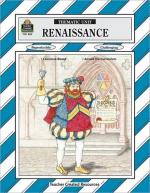|
This section contains 571 words (approx. 2 pages at 300 words per page) |

|
Workshops. Sculpture workshops were operated by independent masters or as part of a larger building campaign for structures such as cathedrals. Thus, training practices, in which an apprentice learned under a master, focused upon developing a uniform style of production. The types of work produced could vary greatly in material (stone, wood, terracotta, wax, or bronze) and in scale. They included such figures as life-size statues of saints, equestrian monuments of military leaders, crucifixes, tomb effigies, portrait busts, and altarpieces. Small objects such as commemorative metals, statuettes, decorative works, or inexpensive religious objects were also produced in certain shops.
Stone Carving. Artists worked in stone that had been quarried and shipped as a rough stone block to their workshops. Their assistants began the process of shaping the block by studying a three-dimensional model, drawing, or print provided by the master. A series of points marked...
|
This section contains 571 words (approx. 2 pages at 300 words per page) |

|




